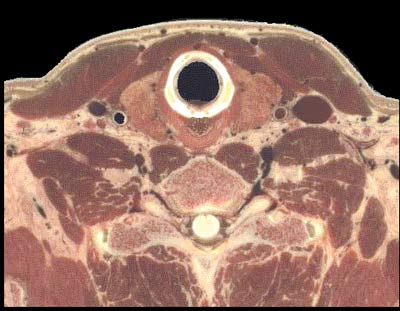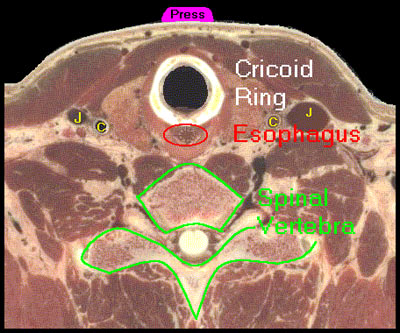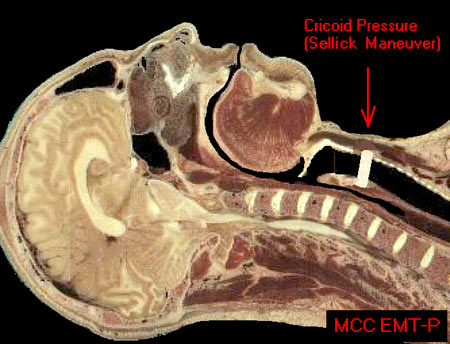Sellick Maneuver
by Peter Bonadonna
The Sellick Maneuver is performed by applying gentle pressure to the anterior neck (in a posterior direction) at the level of the Cricoid Cartilage. The Maneuver is most often used to help align the airway structures during endotracheal intubation. The real value of this procedure is often misunderstood and therefore, is often underutilized. The REAL value of the Sellick Maneuver is to provide a means to prevent gastric insufflation and vomiting during ventilations in an unprotected airway. BLS and ALS medics can direct a member of the resuscitation team to provide this maneuver early and continually until a properly placed endotracheal tube has been inserted. Remember that aspiration pneumonitis has a high mortality rate and proper use of this method can minimize its occurance.
Study the images below. The Cricoid Cartilage is the only structure in the airway that completely encircles the air path. Because of this, it is the strongest part of the airway. Notice that gentle pressure on the anterior neck at the level of the Cricoid will pinch the soft esophagus between the spine and the Cricoid Cartilage. This effectively increases the esophageal opening pressure, making it harder for air to enter the stomach. In the event that the stomach is already distended, this may reduce the chance of vomiting.



Images reproduced and edited with permission from the Visible Human Project.

